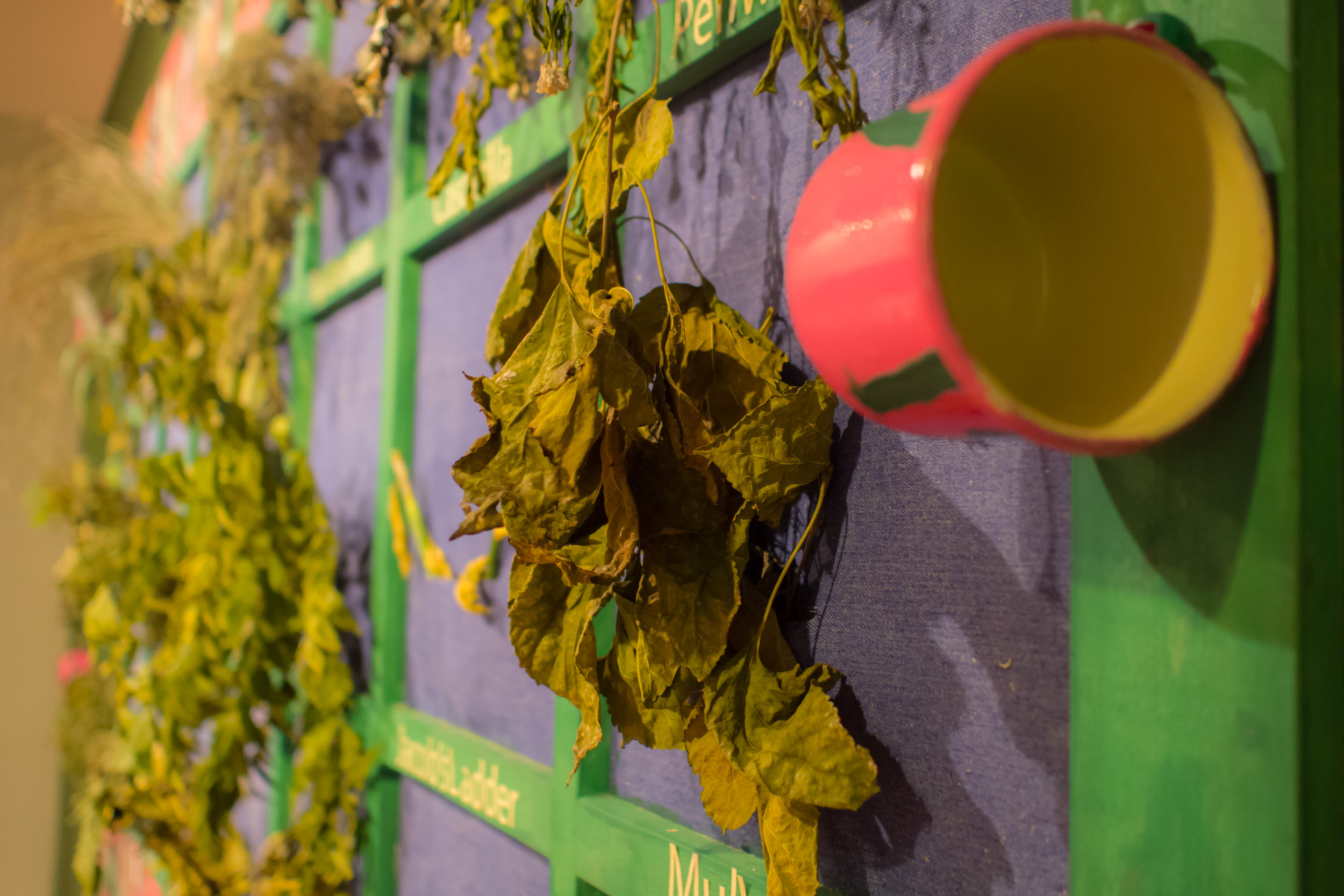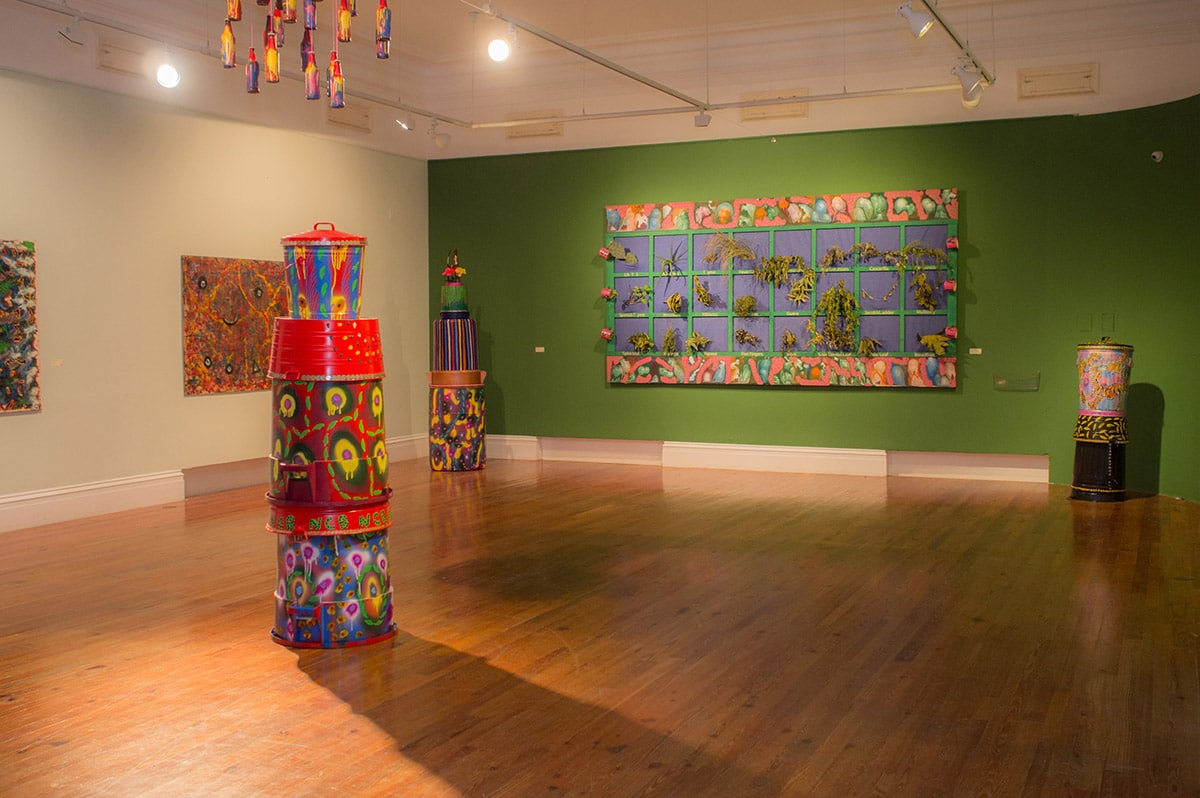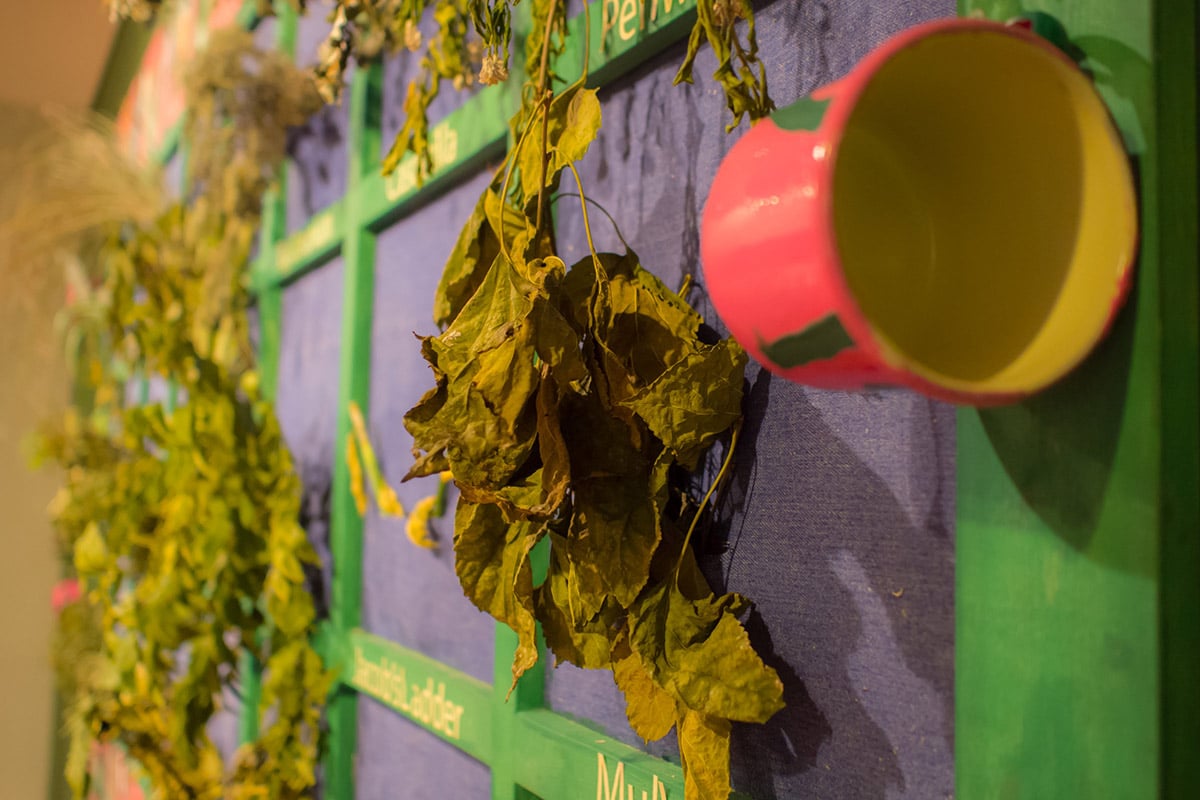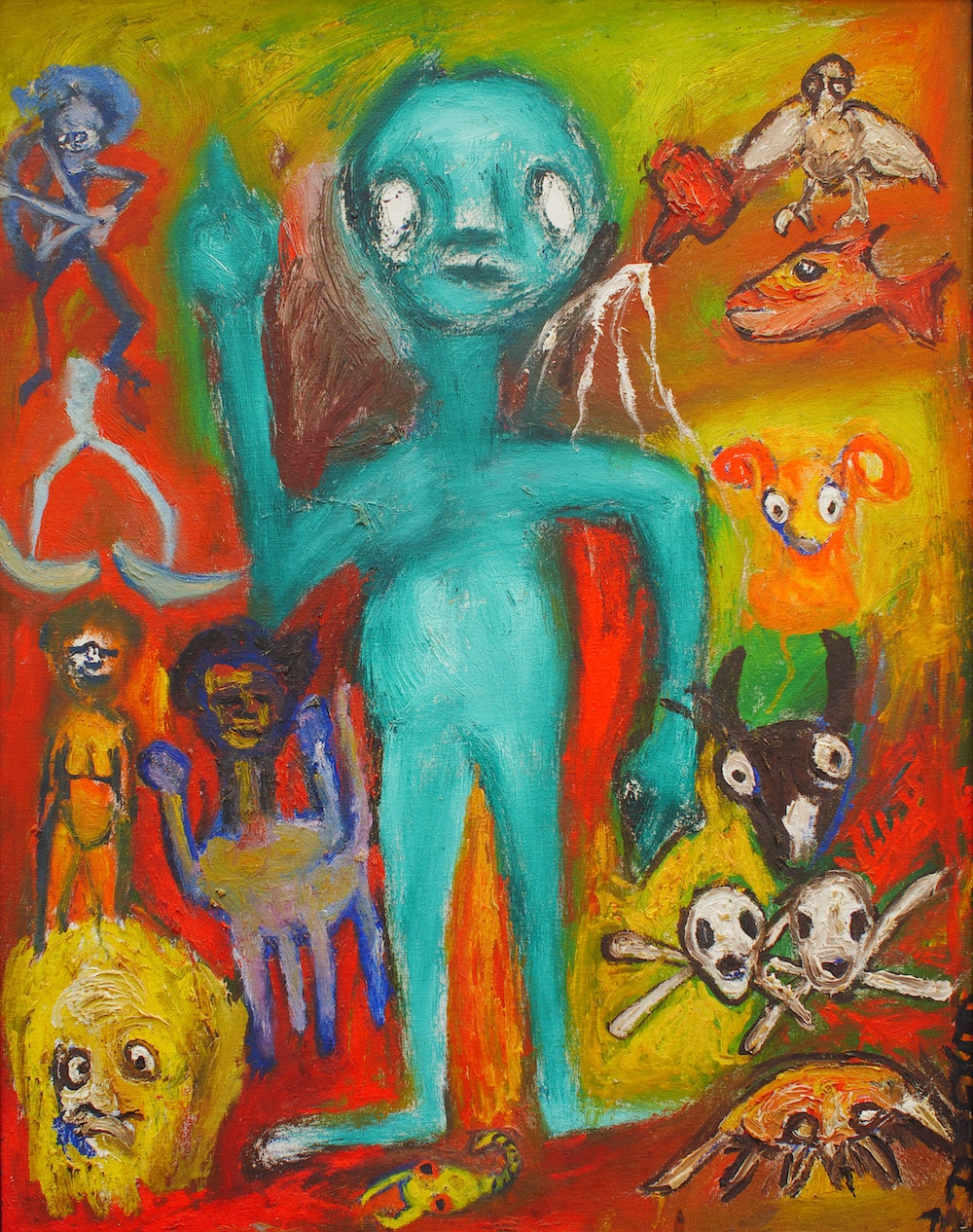
By Dr Ian Bethell Bennett
“We believe that rape is a private matter and that women are inherently unequal.”
As 2017 passed into memory this last week, it seems important to think about how we see ourselves in the future. Spirituality could play a large part in this vision, or we could simply choose to continue along what seems to be a road paved with consumerist joy.
The paradise myth is part and parcel of that consumerism: where beaches and bodies of paradise that we need to survive can be bought, sold, bartered, negotiated away and given to other sovereign states for their own devices. The opening of “Medium: Practices and Route of Spirituality and Mysticism” at the National Art Gallery of The Bahamas (NAGB) on December 14, 2017 presented a moment for reflection, but also for a new focus. When we can celebrate Bahamian ‘masters’ Tony McKay aka “Exuma” or “The Obeah Man,” Amos Ferguson, Wellington Bridgewater and Netica “Nettie” Symonette, along with a boat-load–used intentionally–of other artists, we are saying that perhaps we are changing the way we see ourselves.
It was once practised to appreciate only those classically-trained artists who were somehow ‘better’ than the nonconformists, who envisioned the unseen story, which according to Édouard Glissant, lay submerged and links the entire region together. These untaught hands and fingers put to paper, wood, rock and canvas to create what they see, however they see it. These stories have been effectively silenced, erased, cut off by the din of postcolonial discourse that chooses to see ‘other’ people, in particular, limiting ways.

Netica “Nettie” Symonette works from “No Cross, No Crown”, the installation present in the NAGB’s Ballroom as a part of “Medium: Practices and Routes of Spirituality and Mysticism.”
As James Stark describes in Stark’s History and Guide to the Bahama Islands, (1891) and his recounting of Columbus’ landing:
“Guileless, unsuspecting, generous and unselfish themselves, how could the aborigines understand the wonderful human beings who had suddenly landed upon their picturesque shores? In the distant east, from whence the strangers had come, only the morning sun, in golden effulgence, had ever before emerged.” (26)
The image of inferior beings has been used from the beginning of the landfall debate and representation. He continues:
“They have some curious customs and amusements; and still retain their African tribal distinctions they are divided into Yourabas, Egbas, Ebos, Congos, etc. Every August some of these tribes elect a queen, whose will is law on certain matters. A form of open air dancing has a great hold upon them; it is called a “fire dance,” and is no doubt a relic of their previous savage life.” (188)
The descriptions of these inferior beings, which resonate with European civilisation, but not with the art of self-image depicted by those from the region, are entertaining to some, and apparently long-lasting.
“Darkies have always been notorious for high sounding names. In the States, it is George Washington, Abraham Lincoln. In the Bahamas, it is Prince Albert, Duke of Wellington … Some of the Africans rescued from slave ships brought with them from Africa the secret of making the genuine thatch for roofing houses; it is said that either they cannot or will not impart this secret, which will become a lost art when they die out. Several of the houses in Grant’s Town and one church are roofed with this thatch. It makes a very handsome roof on the inside, finer even than is seen in many of our own churches.” (189)
The other side of the inferiority is that “They are kind-hearted, good-natured people; they sing, dance and are contented and happy on very little” (189).
All can be forgiven, and they can be re-presented as good sorts, except if a negro attempt to assert his or her humanity (or worse, if it is her). But biases such as that expressed below seems not to be jarring to the ear or eye of those who are hearing or reading of such re-presentation.
“I must frankly confess that at times I found an inclination to pardon the supposed criminality of transporting them from Africa, on comparing their destitute and wretched state when first imported, with their condition under the treatment of good masters.” (192)
This observation, Stark attributes to Daniel McKinner’s The Bahama Islands (1804).
The discursive enclosure that empowers disempowering and commodifying bodies and pieces of land is shot through the language, much like the language of leaders today. When discussing emancipation (or women’s bodies today), Stark notes:
“It is strange that they [masters] could not see that unless they were prepared to educate and teach this half-civilised race thrift and economy, and leave it as a sacred charge to their descendants, to watch over, protect, and elevate the colored race to a higher plane of civilization for at least fifty years, they had better have left them as they were. If such a course had been followed it would have been better for both races, and the whites would have been better saved from the ruin and bankruptcy that followed emancipation. As it was, they would merely have abandoned the colored people to the tender mercies of a race, who after they ceased to own them, did not care whether they lived or died, except for what they could get from them, and who determined that the emancipated slaves, and their descendants should never rise to be anything other hewers of wood and drawers of water.” (193).

Netica “Nettie” Symonette works from “No Cross, No Crown”, the installation present in the NAGB’s Ballroom as a part of “Medium: Practices and Routes of Spirituality and Mysticism.”
Of course, such language has long been erased from polite society, and the picturesque images that go along with it that render these ‘weaker and inferior races’ expendable under the rule of Anglo Saxons (193) but the gaze has changed little, except to hide its baggage.
Be that as it may, the celebration of primitive and intuitive art in “Medium: Practices and Route of Spirituality and Mysticism” at the NAGB is fantastic; let us always consider that it should not be diminished from the position it has gathered. The idea that such art should be considered along with ‘masters’ of European artistry, such as Picasso and Goya for two distinct examples, is close to sacrilege, for some. Ironically, it is like saying women should have dominion over their bodies, and Blacks should have souls, back in those early days before the lights came on, or what was called the dark ages, such language was common.
Things have changed!
The images of the inferior and weaker races are important when considered from the standpoint of a postcolonial gaze beaming down on people who remain “hewers of wood and drawers of water.” Only now the language is about gangsters and destabilisers of nationhood and wearers of puffs. It is significant though as Dr Krista Thompson writes in An Eye for the Tropics (2007).
“Tourism promoters’ use of photographs and their attempts to maintain the islands’ place-image all wrought social controls. In the name of tourism, the British colonial and white mercantile elite at various historical moments imposed social regulations based on the rationale that the islands had to sustain their tourist image. The ruling elites often did everything in their power—from the legislation of social policies to the use of the police force—to ensure that islands presented the best image to travelers. Thus, the making of the landscape into “image” was intrinsic to social and spatial control on the islands.” (Thompson, p. 17)
Today, though we are free of such imaging, or we presume to be free from, we remain captured in the space of social injustice, as David Harvey and Edward Soja articulate in their work. Over-the-Hill remains inscribed or framed as a place of quintessential poverty and inferiority, though worthy of note because it is where “the natives” live and so provides a picturesque scene for international consumption.
Spirituality and the naive, primitive intuitive arts
When we argue that we “sit with our bones,” according to Charlotte Henay, PhD candidate at York University and Canadian-Bahamian born into a long line of people, who would have been referred to as chattels, which were initially born into slavery and then later liberated–though stories vary depending on the time and space–we must commune with the ancestors. This story is essential to our balance and our spiritual and religious and national health. This is one of the seriously potent images that comes through in a great deal of the work from the exhibition. As much as Henay in her work from the National Exhibition 8 held at NAGB December 2016- April 2017, would have approached this idea, a part of her research, and telling the stories of our ancestors, Exuma, Symonette and Ferguson do this in this show.
To be sure, many of the artists use the space to create art that speaks to the spirituality of the place/space and the deeply creolised or double consciousness of the land and the people, but the ways in which these four work through their inspiration is directly linked to speaking to spirits that are now sanitised by the establishment, though it lead by example and time. Tongue in cheek, yet non-comic rendering of Symonette’s work follows Exuma as well as this idea, and it is wonderful, notwithstanding any presumed primitiveness of our spaces and places, especially when seen through V.S. Naipaul’s superior eye. We must celebrate our beginnings before we lose them.
The permanent exhibition, “Revisiting An Eye for the Tropics” as currently framed, and “Medium” work together to elucidate much of what we can no longer be seen, or as Stark points out, which will have died out over time. Dr Thompson argues that: “Colonial official and local elites, by enforcing and institutionalizing “picturesequeness,” could safely airbrush unwanted, threatening, and undesirable elements, including people, out of the social frame in the name of maintaining the islands’ place image.” (17)
The place-image must be inviting, not too naive and certainly not to the puff-wearing; too many puffs are dangerous and represent nonconformity. It is also significant that we read fairy tales and other epics and tales of fantasy and magic, yet we think nothing of these, perhaps, because, they are acclaimed works of white magic, not black mysticism.

Tony McKay. “The Stars (Signs of the Zodiac)”. Oil on Canvas. 29” x 24”, no date. Image courtesy of the D’Aguilar Art Foundation.
To discuss spirituality and ‘black’ magic pushes the envelope, even when it is a discussion around herbs, bushes and plants, all with medicinal value, all, or most, having been taken from the local populations who owned the knowledge and created into trendy drugs by large transnational corporations. These corporations disregard the claim to any rights by the same indigenous people who have shared their knowledge with them.
Much of the information that exposes us as being violent, comes from elsewhere and is a mis-re-presentation of cultural realities that see all Blacks as being inferior, base, yet we see not this irony. Nor, as the title points out, does the irony, poignant and painful, in fact, dark and demonic, of owning other persons and their bodies/shores and beaches as was common practice during slavery. Stark is useful for this.
As we progress and discuss the power of the vote and the voice, it is most interesting that marital rape is considered a private matter. This is similar, or as much as slave owners claimed, it was a property matter, slaves and women were their property and if they so wished, could be violently dealt with and even killed without punishment. Today, we see women’s bodies and rape as being a private matter because, once again, the disempowering religious discourse can manage the picturesque. The woman is responsible because she is asking for it, looking for it, even though she be done up from head to toe in a habit.
A woman is a property and becomes the man’s upon marriage or purchase from the ‘crown’. All the while, before, masters raped, beat, destroyed, had sex with their offspring, and represented in evil and ‘dark’ terms all bodies they owned, as they cast those inferior blacks who were unable to defend themselves because of the planters’ dominance. The re-inscription of hierarchal disharmony and patriarchal misogyny is ironic, especially when taken with the post-liberation discourse of those who have freed us and those who fought for freedom, (see Stark’s position above) and like their forefathers and slave masters, they can hide behind the cloak of Wesleyan and not be defrocked, while promoting violence, rape and material ownership, yet decrying murder, as long as the body was not a chattel.
“Medium: Practices and Routes of Spirituality and Mysticism” provides an interesting read especially when juxtaposed with the 2018 anniversary of Majority Rule that has left the Majority, more than 50 percent of Black, mixed, and white women, but mostly the former two groups controlled and oppressed, and so often in the name of national progress and civility and many more who are seen as property subject to someone’s else’s whims and fancies.
That a husband can beat his wife and then force himself on her in 2018, seems sadly ironic and injudicious. The ironies of the language of prostitution and the continuity of old metaphors of rape and female disempowerment, while boasting about Christian “family” values to justify enslavement and commodification of bodies, has become the new language of power. The disharmony between the images presented in this show and the discourse of “enlightened” leaders and the picturesque it creates, seems almost like a fantasy strung out on speed, disjointed.